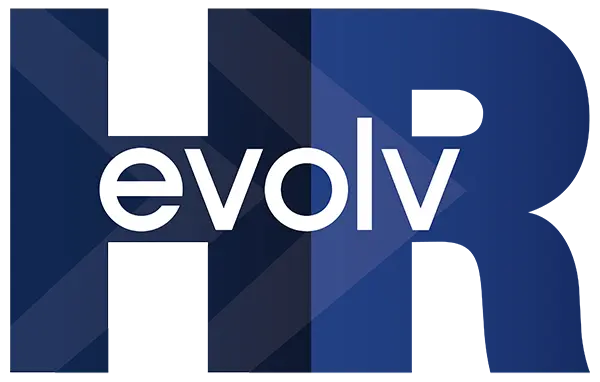10 Essential HR Metrics Every CFO Should Track in 2025
In today's data-driven business landscape, HR teams play a pivotal role in driving organizational success. Yet, many HR teams struggle to align workforce metrics with business goals. This comprehensive guide explores 10 key metrics CFOs and HR leaders need to measure to unlock the full potential of their teams in 2025.
Updated January 2025: Includes post-pandemic workplace trends and remote work considerations.
Why HR Metrics Matter More Than Ever in 2025
Recent studies show that only 11% of business leaders trust HR to use data to address talent needs. However, companies that leverage HR analytics are 3.5x more likely to outperform their peers in revenue growth. By focusing on the right metrics, CFOs can empower HR teams to demonstrate their strategic value and gain the C-suite's confidence.
With the rise of hybrid work and the ongoing talent shortage, tracking these metrics has become critical for maintaining competitive advantage. Let's explore how effective HR management can transform your organization's performance.
The 10 Metrics
1. Time-to-Fill
Tracks the number of days it takes to fill a job opening.
Why It Matters: Reveals bottlenecks in the hiring process and helps plan future hiring needs. In 2025, the average time-to-fill is 44 days, costing companies an average of $4,700 per hire.
Industry Benchmark: 30-40 days for most positions
2. Referral Rate
Measures the percentage of hires sourced through employee referrals.
Why It Matters: Employee referrals often yield higher-quality candidates and reduce hiring costs.
3. Cost-per-Hire
Calculates the total cost of recruiting and hiring a new employee.
Why It Matters: Identifies areas to optimize the recruiting budget.
4. Absenteeism Rate
Percentage of unscheduled absences among employees.
Why It Matters: High absenteeism impacts productivity and morale.
5. Total Financial Impact of Absences
Estimates the cost of unplanned absences as a percentage of payroll.
Why It Matters: Highlights the financial impact of absenteeism on profitability.
6. Total Labor Costs
Includes wages, taxes, and benefits.
Why It Matters: Helps monitor spending and identify trends impacting profitability.
7. Actual Total Compensation vs. Budget
Compares total compensation costs with budgeted amounts.
Why It Matters: Ensures spending aligns with financial plans and identifies opportunities for improvement.
8. Turnover Rate
Measures the percentage of employees leaving the organization.
Why It Matters: High turnover signals deeper issues in culture or management. The average cost of replacing an employee is 50-200% of their annual salary. Learn more about building better teams to reduce turnover.
9. Voluntary Turnover Rate
Tracks employees who leave voluntarily.
Why It Matters: Helps distinguish between hiring and management issues.
10. Turnover Rate by Segment
Analyzes turnover within specific departments, locations, or managers.
Why It Matters: Pinpoints areas needing attention to improve retention.
How Modern HR Technology Helps
Today's HCM platforms provide HR leaders and CFOs with real-time, actionable insights to track these metrics effectively. With pre-built analytics and intuitive dashboards, leaders can make data-driven decisions to enhance productivity and profitability.
EvolvHR's comprehensive payroll services integrate seamlessly with HR analytics tools, making it easier to track these critical metrics while ensuring compliance and accuracy.
Start Measuring Today
Transform your HR team into a strategic powerhouse. Start by implementing these metrics and leveraging modern HR technology to align efforts with business outcomes.
Frequently Asked Questions
Q: How often should we measure these HR metrics?
A: Most workforce metrics should be tracked monthly, with quarterly reviews for trend analysis. Critical metrics like turnover and absenteeism may warrant weekly monitoring in high-turnover industries.
Q: Which metric is most important for small businesses?
A: For small businesses, we recommend starting with turnover rate and cost-per-hire. These directly impact your bottom line and are easier to track without sophisticated HR systems.
Q: How do these metrics change for remote teams?
A: Remote work requires additional focus on engagement metrics and productivity indicators. Time-to-fill may be shorter due to wider talent pools, but onboarding metrics become more critical.
Q: What's the ROI of investing in HR analytics?
A: Companies using HR analytics report an average 8% increase in sales, 24% higher net profit margins, and 58% better performance in meeting business goals.
Related Resources
- 5 Questions to Ask Before Choosing an HR Payroll Provider
- Building Benefits Employees Will Love: A Comprehensive Guide
- 10 Ways to Future-Proof HR Compliance
Ready to Transform Your Human Resources Operations?
Tracking these metrics is just the beginning. To truly transform your HR practices and align people management with business success, you need the right partner and tools.
Schedule a consultation with EvolvHR today to learn how we can help you implement these strategies and build a stronger, more resilient organization.
